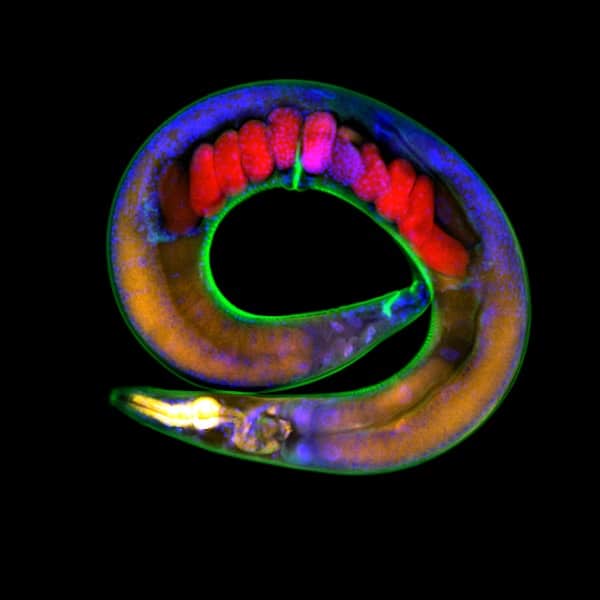 Evolution
Evolution
 Intelligent Design
Intelligent Design
 Life Sciences
Life Sciences
Nematodes Push Epigenetics to the Limit, as Another “Zombie” Bites the Dust

Evolution as “settled science” in the mind of the public and the media is based on a range of persistent myths – documented by Jonathan Wells in his new book Zombie Science: More Icons of Evolution, the sequel to Icons of Evolution. One myth, a shambling zombie if ever there were one, is what Dr. Wells calls in Chapter 4, “DNA – The Secret of Life.”
But isn’t DNA the one and only secret of life? Neo-Darwinism, a gene-obsessed doctrine, needs it to be. But increasing awareness of epigenetic — that is, bypassing genetic – inheritance messes with the simple story that evolutionists have successfully sold up till now. New research with roundworms pushes the extent of epigenetic effects farther than they’ve ever been observed before – 14 generations.
By switching the worms back and forth between cooler and warmer environments, European scientists were able to induce an inherited change in gene expression producing a fluorescent glow. Nematodes, especially the species C. elegans, are a favorite with researchers because of their brief lives and the consequent rapid passing of generations. A phenomenon of comparable extent in humans would be much harder to document.
The work was reported in Science. They call it “environmental information” (“Transgenerational transmission of environmental information in Caenorhabditis elegans”):
Ancestral legacy effects
Environmental change can critically affect the lifestyle, reproductive success, and life span of adult animals and their [progeny] for generations. Klosin et al. showed that in the nematode worm Caenorhabditis elegans, exposure to high temperatures led to expression of endogenously repressed copies of genes — sometimes called “junk” DNA. This effect persisted for >10 generations of worms. The changes in chromatin occurred in the early embryo before the onset of transcription and were inherited through eggs and sperm.
Note the reference to “Junk DNA,” another zombie of evolutionary science dealt with by Jonathan Wells another book, The Myth of Junk DNA.
From the story at Science Alert, lucidly explained by Signe Dean:
To study how long the environment can leave a mark on genetic expression, a team led by scientists from the European Molecular Biology Organisation (EMBO) in Spain took genetically engineered nematode worms that carry a transgene for a fluorescent protein. When activated, this gene made the worms glow under ultraviolet light.
Then, they switched things up for the nematodes by changing the temperature of their containers. When the team kept nematodes at 20° Celsius (68° F), they measured low activity of the transgene — which meant the worms hardly glowed at all.
But by moving the worms to a warmer climate of 25° C (77° F), they suddenly lit up like little wormy Christmas trees, which meant the fluorescence gene had become much more active.
Their tropical vacation didn’t last long, however. The worms were moved back to cooler temperatures to see what would happen to the activity of the fluorescence gene.
Surprisingly, they continued to glow brightly, suggesting they were retaining an ‘environmental memory’ of the warmer climate — and that the transgene was still highly active.
Furthermore, that memory was passed onto their offspring for seven brightly-glowing generations, none of whom had experienced the warmer temperatures. The baby worms inherited this epigenetic change through both eggs and sperm.
The team pushed the results even further — when they kept five generations of nematodes at 25° C (77° F) and then banished their offspring to colder temperatures, the worms continued to have higher transgene activity for an unprecedented 14 generations.
What’s the purpose for the worms? One of researchers, lead author Adam Klosin, says it could be “a form of biological forward-planning.” That doesn’t sound very Darwinian.
Jonathan Wells concludes, “DNA does not contain the genetic program for an organism, and DNA is far from being the secret of life. Continued faith in it is rooted in materialism.” That is, a materialist understanding of evolution requires the dogma of DNA. But science, meanwhile, marches on and another zombie bites the dust.
Photo credit: C. elegans, by Adam Klosin, via Centre for Genomic Regulation.
H/t: Douglas Axe.
